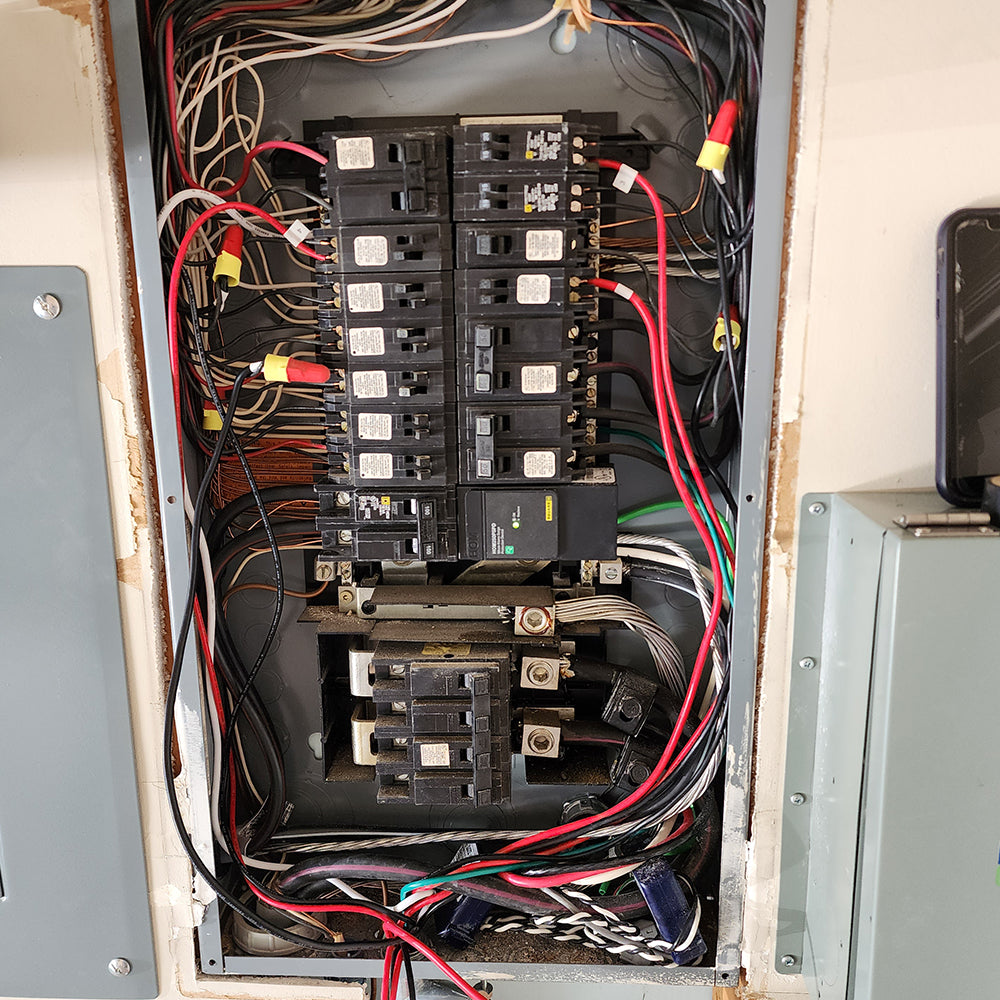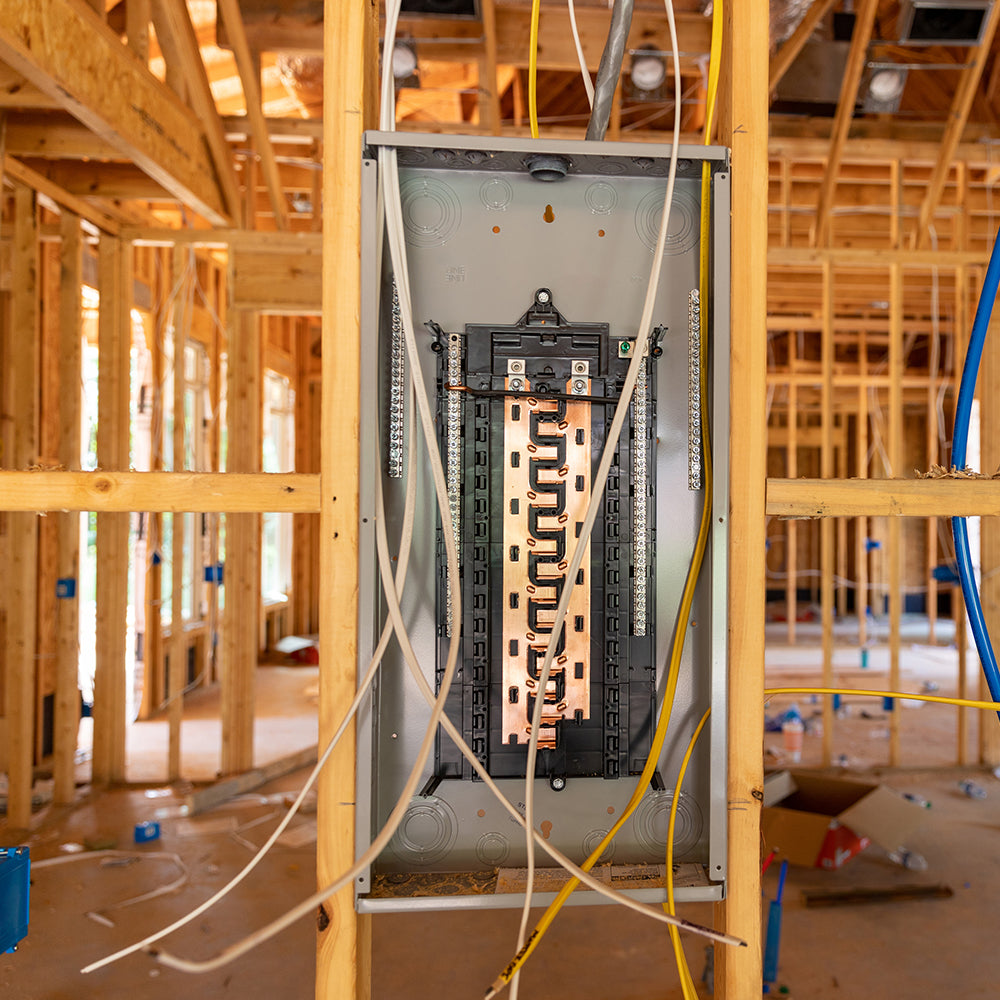The difference between main breaker and main lug are parts of the load center or electrical panel. They work together in order to safely distribute electricity throughout homes and buildings.
In this article, we’re going to focus on the main lug vs main breaker; and understand their inner workings, functionality, and importance.

Understanding Main Lug vs Main Breaker
What is a Main Breaker?
A main breaker is used in residential and commercial electrical panels. It is mainly used in service entrance applications. Its incoming supply cables are connected to the main breaker which feeds power to the load center and branch circuits.
Known for being a critical component in the electrical panel, the main breaker comes in various sizes and ranges to fit any load demands. Its main job is to act as an overcurrent protection device and work as the primary connector and disconnector of the whole electrical system.
The main breaker is where the main power source connects to the load center. It also serves as a convenient way to safely shut off power during emergency situations, as well as for repair and maintenance works. Additionally, it helps avoid short circuits and overloads. When comparing a main lug vs. main breaker panel, the key difference lies in the functionality. A main breaker panel includes a built-in breaker to cut power, while a main lug panel relies on an upstream breaker for protection and shutoff.
Typically, it is placed on top of all other breakers and is large in size. It has a single disconnect for everything that the load center feeds, and is often called the central switch of a property.

What is a Main Lug?
A main lug does not have a circuit breaker, unlike the main breaker.
It is the middle ground where the primary service conductors meet. It serves as the distribution center. It also comes in various sizes depending on the design of the electrical panel. Its biggest difference with the main breaker is that it doesn’t have an overcurrent device for protection.
The main lug is where incoming power cables are spliced, serving as the point where connections meet and branch out across their respective areas. It is commonly used for sub-panels, main panels, or when power is being distributed from the main panel. This configuration is often selected based on specific code requirements or design needs. When comparing a main lug vs. main breaker panel, a main lug panel does not have a built-in breaker, relying instead on an upstream breaker for protection, whereas a main breaker panel includes a dedicated breaker for power shutoff and circuit protection.
But there’s also a difference between a sub-panel and a main lug. Subpanels can have their own breakers without a main breaker while the main lug doesn't have those. But the main lug can still be used to lighten up to load off of the main panel.
It is a good choice for a safe and secure way of connecting incoming cables when distributing power from the main panel to multiple subpanels. It gives the flexibility to customize overcurrent protection to individual circuits.
Load Center Ratings
It is important to know the continuous amperes, available fault current, and maximum amperes when choosing overcurrent protection devices and load centers.
There are two rule of thumb to follow when choosing, which are:
- The equipment responsible for interrupting the current at other than fault level should have an interrupting rating at a nominal circuit voltage and is enough for the current that’s going to be interrupted.
- Its interrupting rating should be enough for the current available at line terminals and the nominal circuit voltage.
There are two ways to achieve this, which are:
-
Series Rated - meant that the main upstream circuit protection device has an interrupting rating that is greater than or equal to the system’s available fault current. However, the subsequent downstream circuit protection can have a lower rating. For example, your property is with an available fault current of 22,000 amperes. The breaker at the entrance is then rated with 22,000 amperes, and the additional downstream breaker has a 10,000-ampere rating.
-
Full Rating - this is achieved by choosing the circuit protection devices that have individual ratings that are equal to or greater than the available fault current. For example, if your house requires 15,000 amperes of fault current available at the service entrance, the circuit protection device should have an interrupting rating of (or at least) 15,000 amperes.
The Pros and Cons of Main Lug vs Main Breaker
Both of them are a necessity in residential and commercial electrical systems, especially to meet specific requirements. But, what are the pros and cons of using them? Here’s some of them:
Pros
- Both are essential to have when expanding a property’s circuits when needed.
- A main lug-only load center is similar to a sub-panel when it comes to the benefit of being able to add more circuits, minus the overcurrent protection.
- The main lug load center can carry a number of circuit breakers and can handle the safe and optimal electrical distribution on your property.
- The main breaker panels are steadfast and reliable in safeguarding any properties from overloads and overcurrents.
Cons
- Double-tapped main lugs - this is when two wires are tapped into a single lug. Not only is this illegal but it is prone to overloading and trips.
- The main breaker can only do overcurrent protection and is unable to protect from short-circuiting.
How to Convert a Main Lug to a Main Breaker
If the need to adapt arises and you suddenly find yourself with the question, “Can you convert your main lug to a main breaker?”
Yes, you can convert it—as long as the MLO(Main Lug Only) panel is designed as such. Check your panel’s brand and model to see if this is applicable.
If your panel is convertible, provided below is a step-by-step guide on how to convert your main lug to a main breaker:
- Assess: Check by looking at the amperage rating, electrical system’s load requirements, and room for adding a main breaker
- Choose the Main Breaker: Based on your electrical load, pick the breaker that has the right amperage rating
- Turn off the main power supply
- Remove the incoming power cables from the main lug
- Remove the main lugs. Make sure that you check the manufacturer’s guidelines
- Install the main breaker. Make sure to follow the panel’s instructions. Or may also contact your local experts to ensure it is done correctly.
- Connect the incoming wires
- Add in the Load Wires
- Secure all wired connections and test for safety and functionality
- Label the main breaker of its amperage rating and usage/purpose
In summary
Both the main lug vs main breaker play a crucial role in the distribution of electricity from the provider to all parts of a home or building. The biggest difference is that the main breaker works double as the shield while connecting power to an establishment. Meanwhile, the main lug serves as the hub that channels energy without any interruption.
* We want to give credit where credit is due. Professional writer, Cris Ilao, contributed research and content to this blog titled: Main Lug vs Main Breaker Thank you, Cris, for your contributions!












